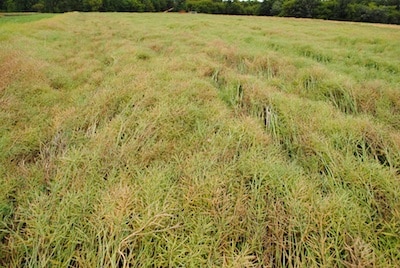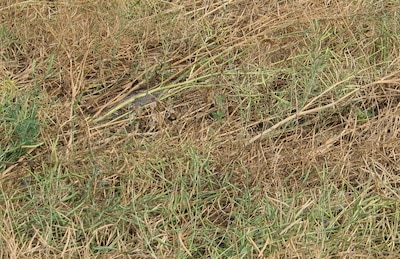

Follow these tips to harvest crop with plants ripening prematurely from disease:
1. Walk the crop and assess the level of disease damage.
2. If the number of diseased plants and disease severity are low, don’t alter harvest plans.
3. If infection rates are high, determine where most of the yield is. If it’s in the healthy plants, then make harvest decisions based on what’s best for the healthy plants. That means swathing at 50% to 60% seed colour change for ideal yield and quality. If most of the yield is in the infected plants, then earlier swathing — at 30% to 40% seed colour change — may be more appropriate. But make sure seeds in pods on branches and upper main stems are firm. Diseased plants will dry down prematurely, which is why swathing earlier is recommended. The sclerotinia fungus may continue to grow on swathed canola if conditions are wet, but seeds that have reached the firm green stage or later should still mature.
4. When swathing sclerotinia-infected crops, be careful when using a swath roller. Lift the roller so it doesn’t pack the windrow too aggressively. This will protect the pods of those damaged and more advanced plants. Also, if weather conditions after swathing remain damp, compacted swaths can hasten development of sclerotinia in the swath.
5. Canola with severe sclerotinia infection can be very dusty when combined, due to the growth of the sclerotinia fungus as well as other moulds that can attack the decaying plants. We recommend growers wear a mask when handling severely-diseased canola.